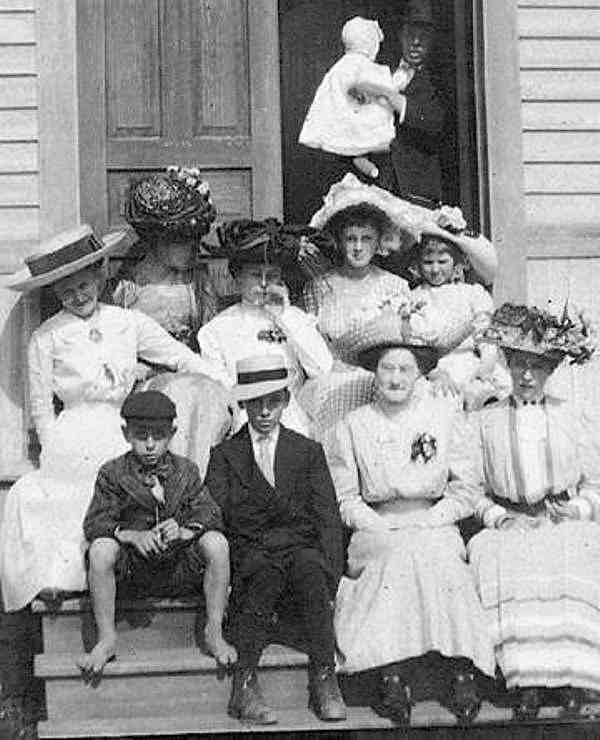
Figure 1.--Here we see a group in front of a Methodist Church in Cassville, Georgia after a church service, we think in the 1910s. We are not sure about the denomination, but it looks to be a Protestant church. |

|
America by the turn-of-the 20th century was a much more religiously diverse country as the result of extensive 19th century immigration. The intoduction of the Kodak Brownie (1900) and similar cameras meant that we have a wealth of images from the 20th century. The immigrant flow contibued wuth few restrictions untill World War I (1914-18). Americans dressed up to go to church. The term in the early 20th century was Sunday go to meeting clothes--a Protestan term. Thus photographs of church goers over time provide a goos idea as to how people dressed up at time. Here it is helpful to know when the photograph was taken, where it was taken, and the religious denomination. All these factors affected the clothing that the children wore to church. The season of course was also a factor. The religious denomination to some extent had social class connotations. Anglicans (Espiscopalians) had the most upper-class members. Fundamentalist Protestanct scets were often low-income people. Unfortunately many of the images available in the phoogrphic record do not specify the denomination of the church images.
America by the turn-of-the 20th century was a much more religiously diverse country as the result of extensive 19th century immigration. Americans dressed up to go to church. The term in the early 20th century was Sunday go to meeting clothes--a Protestant term. Thus photographs of church goers over time provide a good idea as to how people dressed up at time and the 20th cenury provide an unrivaled photopgraphic record. The introduction of the Kodak Brownie (1900) and similar cameras meant that we have a wealth of images from the 20th century.
The immigrant flow continued with few restrictions until World War I boke out in Europe (1914). Immigration had a huge impact on religion in America because therelgious mix in Euroioewas different han in merica. The majr difference wa he number of Catholics. Jews were also important, not so much because Jews wre a large part of the European population, but because Tsarist policies toward Jews drove them to emigrate. Here we see a group in front of a Methodist Church in Cassville, Georgia after a church service, we think in the 1910s. We are not sure about the denomination, but it looks to be a Protestant church (figure 1).
Religion in the 1930s as the Depression took hold was marked by an increase in church membership and attebdance, but the economic struggles Americans faced resulted in lower donations. This was the case for most mainstream Protestant denominations. Methodist, Baptist, and Lutheran membership and attendance increased. Catholic church attendance also increased. There were real changes underway among Catholics. The massive immigration from Europe since the 1870s had brought huge numbers of Catholics into America and many retained an European orientation. Gradually Catholics were being assimilated. The prosperity of the Roaring Twenties was an important diver, but we sill see a stronger European orientation among Catholics and Protestants. The immigration restrictions enacted in the 1920s sharply reduced immigration, essentially freezing the ethnic balance. While his seems to have frozen the relative importance of the main-line churches, there was one important development. The Depression seems to have driven fundamentalism reflected in the growth pentecostal churches, much stronger than the increases in mainline churches. Pentecostalism is a Protestant Charismatic Christian movement that focuses on direct personal experience with God beginning wih baptism. One study showed that the number of Assemblies of God churches nearly quadrupled (1926-36). There were new denominations that appeared such as the Jehovah's Witnesses. The economic struggles associated wth the Depression caused many churches, Christian schools, and ministries to shot down or scale back operations. Donations and support for the clergy declined. Churches had to reduce charitable spending just when it was most needed. But churches organized soup kitchens, food and clothing donations, and other relief efforts. The Depression also created a range of spiritual uncertainties. Socialist thinking gained support, generating questions about historic Christian beliefs. Catholics seem to have been the most organized especially on issues like abortion. They applied their growing political power to resist secular trends encode Christian teachings into law. This was most observable in pressure on Hollywood to enforce morality codes.
Navigate the Boys' Historical Clothing Web Site:
[Return to theMain U.S. church attendance page]
[Return to theMain U.S. religion page]
[Introduction]
[Activities]
[Biographies]
[Chronology]
[Clothing styles]
[Countries]
[Bibliographies]
[Contributions]
[FAQs]
[Glossary]
[Images]
[Links]
[Registration]
[Tools]
[Boys' Clothing Home]
